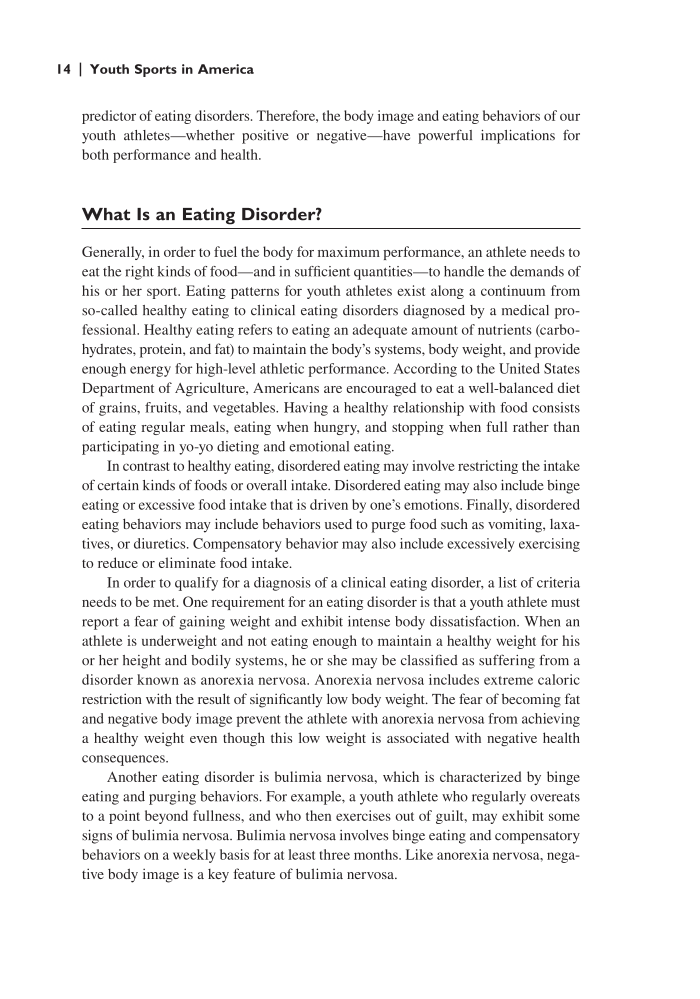14 Youth Sports in Amer i ca predictor of eating disorders. Therefore, the body image and eating behaviors of our youth athletes—whether positive or negative—have powerful implications for both performance and health. What Is an Eating Disorder? Generally, in order to fuel the body for maximum performance, an athlete needs to eat the right kinds of food—and in sufficient quantities—to handle the demands of his or her sport. Eating patterns for youth athletes exist along a continuum from so-called healthy eating to clinical eating disorders diagnosed by a medical pro- fessional. Healthy eating refers to eating an adequate amount of nutrients (carbo- hydrates, protein, and fat) to maintain the body’s systems, body weight, and provide enough energy for high-level athletic performance. According to the United States Department of Agriculture, Americans are encouraged to eat a well-balanced diet of grains, fruits, and vegetables. Having a healthy relationship with food consists of eating regular meals, eating when hungry, and stopping when full rather than participating in yo-yo dieting and emotional eating. In contrast to healthy eating, disordered eating may involve restricting the intake of certain kinds of foods or overall intake. Disordered eating may also include binge eating or excessive food intake that is driven by one’s emotions. Finally, disordered eating behaviors may include behaviors used to purge food such as vomiting, laxa- tives, or diuretics. Compensatory behavior may also include excessively exercising to reduce or eliminate food intake. In order to qualify for a diagnosis of a clinical eating disorder, a list of criteria needs to be met. One requirement for an eating disorder is that a youth athlete must report a fear of gaining weight and exhibit intense body dissatisfaction. When an athlete is underweight and not eating enough to maintain a healthy weight for his or her height and bodily systems, he or she may be classified as suffering from a disorder known as anorexia nervosa. Anorexia nervosa includes extreme caloric restriction with the result of significantly low body weight. The fear of becoming fat and negative body image prevent the athlete with anorexia nervosa from achieving a healthy weight even though this low weight is associated with negative health consequences. Another eating disorder is bulimia nervosa, which is characterized by binge eating and purging behaviors. For example, a youth athlete who regularly overeats to a point beyond fullness, and who then exercises out of guilt, may exhibit some signs of bulimia nervosa. Bulimia nervosa involves binge eating and compensatory behaviors on a weekly basis for at least three months. Like anorexia nervosa, nega- tive body image is a key feature of bulimia nervosa.
Document Details My Account Print multiple pages
Print
You have printed 0 times in the last 24 hours.
Your print count will reset on at .
You may print 0 more time(s) before then.
You may print a maximum of 0 pages at a time.









































































































































































































































































































































































































































